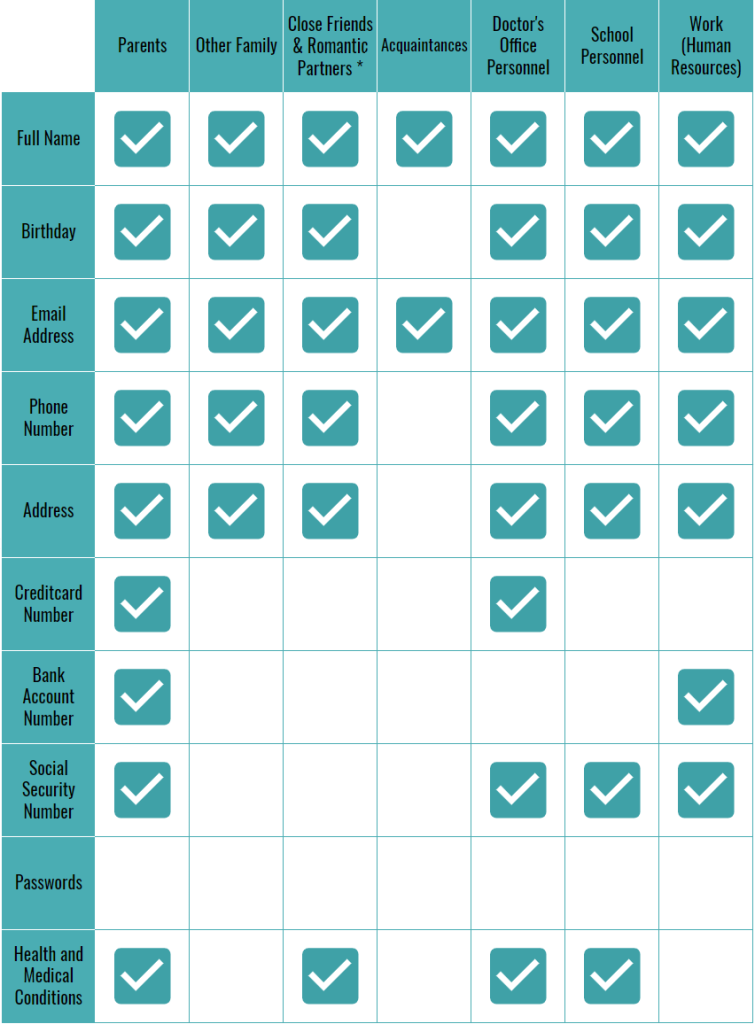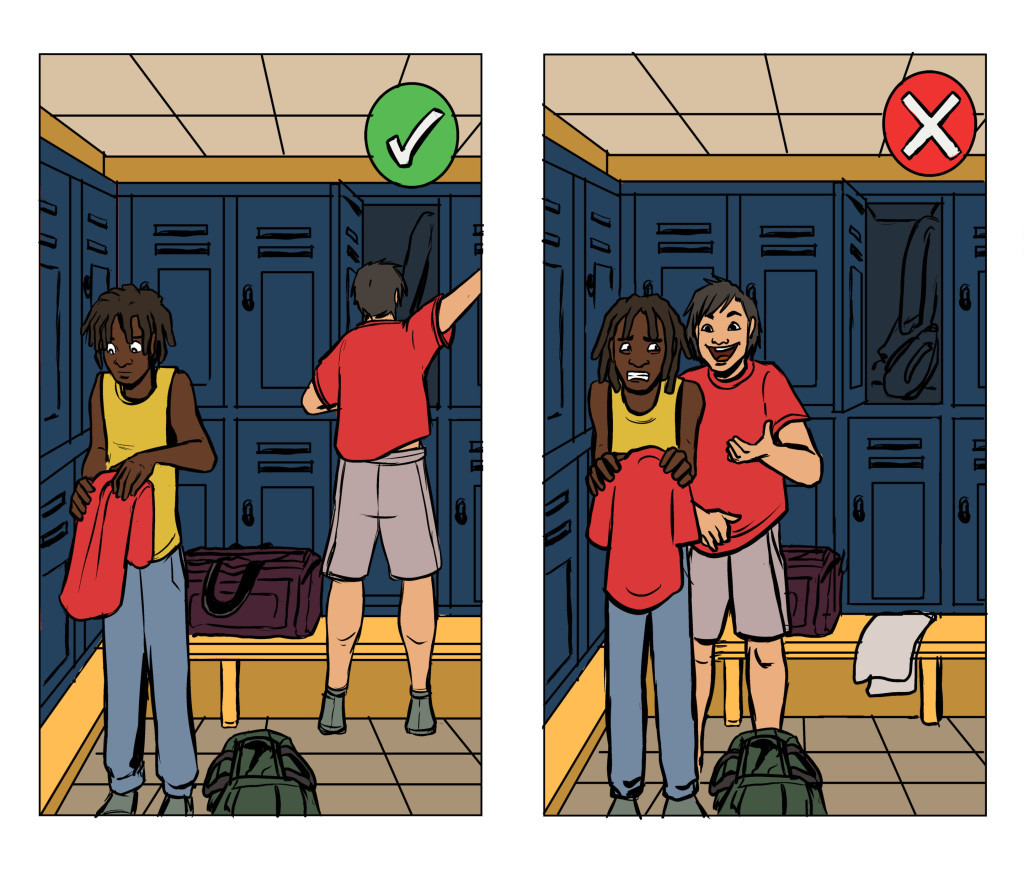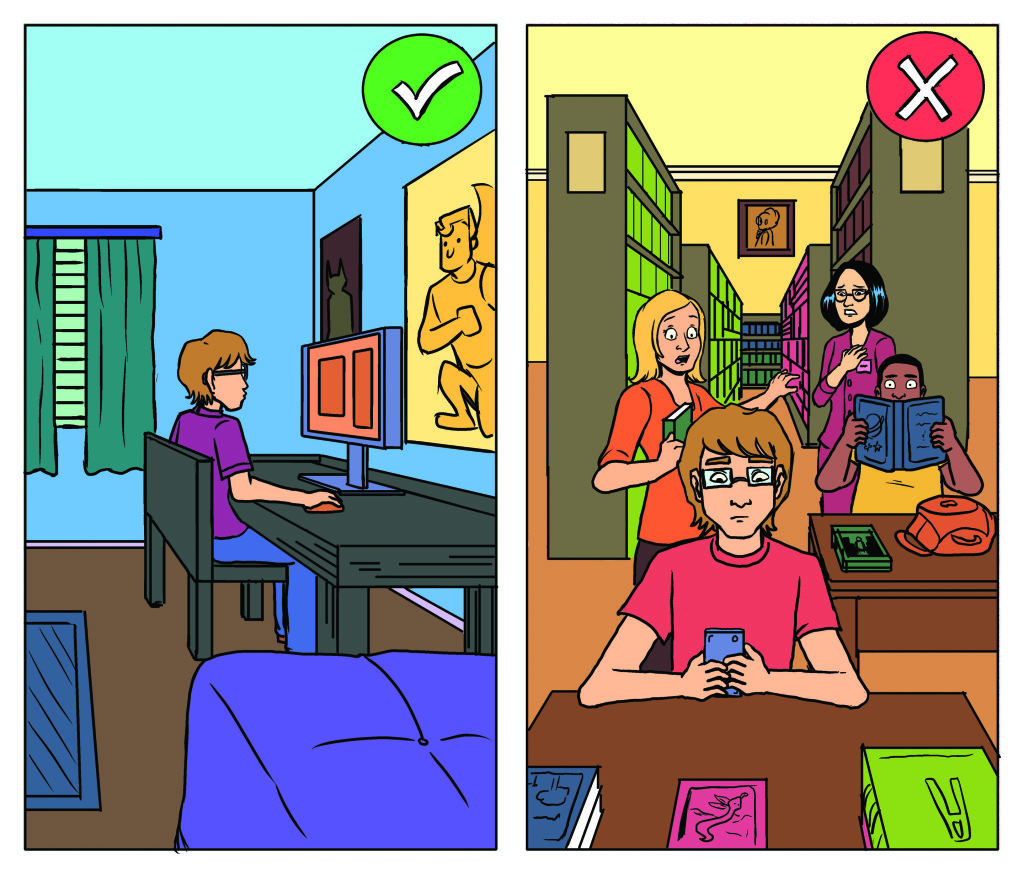Sharing Personal Information
Private conversations often involve sharing personal information. There are many different types of personal information, and certain information should only be shared in certain contexts with certain people.
“Personal information” is any information that could be used to identify you, find out more information about you, or steal your identity. This includes:
- Your full name, address, phone number, email address, schools you have attended, passwords, and social security number or credit card numbers
- Pictures you might post or be tagged in on social media. These often contain personal information, like addresses, and some people can use a picture to locate you. Even if personal information is not included in the photo, addresses can sometimes be extracted from the image file itself.
Some personal information is commonly shared, including:
- Your full name. It’s okay for people you work with to know your full name, even if you are acquaintances.
- The month and day of your birthday.
- Some people prefer not to share the year they were born, but it may be easy to guess if you already know how old someone is.
Note: While it’s expected that your friends and coworkers would know your name and birthday, you would not post your full name and birthday on an online dating profile, since some people could use that information to locate you or hurt you.
Most of your personal information is also private information. You might need to share pieces of this information with certain people at certain times, but it’s important to know what is appropriate to share and with whom. For example, some information can be shared with work, school administrators, or medical personnel, but only when written on specific forms.
Check the chart below for details about sharing personal information. Notice that some information, like passwords, should never be shared with others. Also notice that strangers are not on this chart – they should not have access to this information.
This chart lists some common examples, but you might have different types of people in your life. For example, if your finances are separate from your parents’, you do not need to share credit card or banking information with them. If someone else who is not on this chart helps you manage your finances, that person might be able to access the information in the “parents” section instead.
*Some people are comfortable having joint bank accounts, credit cards, or emails with long-term partners or spouses. In those cases, it is okay to share a credit card, bank account number, or password.

Avoiding Scams
Some people lie about who they are to get you to give them your personal information, which they will then use to steal your identity or scam you, usually for financial gain. This is called a phishing attack.
Fake Calls Or Emails
Fake calls or emails are usually random. For example:
- Someone might call and say they are from your credit card company and ask you to tell them your account information.
- Somebody might send you an email to ask for financial help with an emergency situation, even though that emergency is actually fake.
Note: Legitimate contacts never ask for your password, full credit card number, or full social security number over the phone or via email.
In some cases, people who you get to know over time might also try to access your personal information, especially your financial information. If a friend, romantic partner, or family member asks you to send them money, be careful. Sometimes people lie about what that money will be used for.
- If someone asks you to pay your share of money for food or an event you shared together, that’s okay.
- If someone asks you to pay for an expense that is not related to you, then think carefully about whether it’s an expense you should be paying for. If you are not sure, ask someone you trust.







